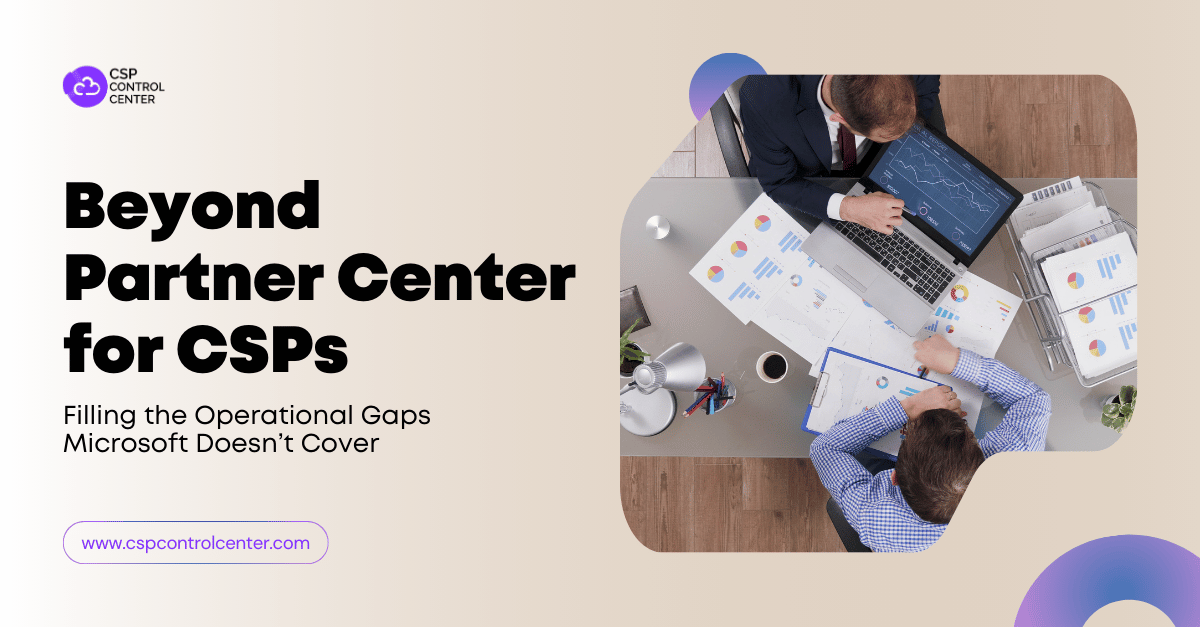With the transition to remote work and increased reliance on the Cloud for seamless operations, the demand for Microsoft products has increased considerably. Invariably, with the rise of this demand, Microsoft’s CSP program is gaining rapid momentum. Put simply, Microsoft’s CSP program is about becoming a reseller/ distributor, or essentially a provider of Microsoft products to end users. While this is a great opportunity to attract and retain diverse audiences and businesses with some of the fastest growing Microsoft offerings, it is also an effective and developing revenue stream that enterprising individuals can seek to explore. With limited investments, becoming a CSP can be highly rewarding if you play your cards right.
Also, this might seem very exciting and might motivate you to sign up as a CSP today. And that’s undoubtedly a good call. However, it is equally important to cover all your bases when deciding to become a Microsoft CSP. Here are the top 3 things you must consider before taking the leap.
What services can a CSP offer?
Anyone contemplating becoming a CSP must first understand the various services or Microsoft products they can offer to their customers. While there are diverse services, there are three most popular services that a CSP can choose from:
Microsoft 365
Microsoft 365 includes the most collaborative, up-to-date features in one seamless, integrated experience. Microsoft 365 includes the robust Office desktop apps that you’re familiar with, like Word, PowerPoint, and Excel. You also get additional online storage and cloud-connected features that let you collaborate on files in real time.
Dynamics 365
A collection of Customer Relationship Management (CRM) and Enterprise Resource Planning (ERP) to facilitate sales, relationship building, marketing, operations, etc. It enables users to make sense of their data to augment company sales, improve customer experience and optimize operations.
Microsoft Azure
The Azure cloud platform is more than 200 products and cloud services designed to help you bring new solutions to life—to solve today’s challenges and create the future. Build, run and manage applications across multiple clouds, on-premises and at the edge, with the tools and frameworks of your choice.
Microsoft Power Platform
A subset of technologies that you can seamlessly connect with other Microsoft products, including Microsoft 365, Dynamic 365, Microsoft Azure. It includes Power BI, Power Apps, Power Automate and Power Virtual Agents aimed to enable user to analyze data, build solutions, automate processes, and create virtual agents.
Software Subscriptions
CSP can sell Windows Server and SQL Server subscriptions to meet the rapidly growing customer demands and expectations requiring cost-effective solutions to deal with increasing workloads on the cloud.
CSP region availability
As a CSP, you will need to decide your country of operation based on region availability. As a policy, Microsoft does not allow its CSPs to operate in more than one country or a country cluster, depending on the location, unless registered in all. This is primarily because each country or country cluster is likely to have a different currency, tax rates and other legal and financial obligations.
Microsoft seeks to prevent any implications for its partners in case they are not well versed with the tax regime and other financial policies. If you wish to operate in more than one region, it is important to first learn about the legal and financial regime of those countries and then register as a CSP in each one of them. It is best to read through Microsoft’s resources to get explicit clarity on the regions and countries where you can sell Microsoft products and subscriptions as a CSP.
The bottom line is that you need to start with finding your company location and matching it with the region availability for CSPs. There might arise a situation where your country of operation is not listed, in such a situation, simply follow the above resource for clarity.
Types of partner relationships in the CSP program
As a CSP, you decide the model of engagement you seek to have with Microsoft as well as your customers. Depending on a direct vs indirect model, there are 3 major models that an aspiring CSP can explore:
Indirect provider ( Distributor)
An indirect provider, more commonly referred to as a distributor directly deals with Microsoft when it comes to purchase of Microsoft products and subscriptions. However, their approach to selling is not merely direct. Rather, they collaborate or partner with indirect resellers to offer the acquired products and subscriptions to a large customer base. Most distributors handle the billing and payments for their resellers and also provide the necessary infrastructure and customer support. Invariably, they manage the entire resellers’ lifecycle to facilitate customer success.
Indirect reseller
An indirect partner generally buys SKUs (Stock-keeping units) from an indirect provider or a distributor and does not directly deal with Microsoft. This is an easier process for those starting off as the distributor generally takes care of the infrastructure and support. Becoming an indirect CSP costs much less as the set-up cost is very nominal. Finally, indirect CSPs benefit from robust distributor support enabling them to focus on customer experience and business development. To learn more about becoming an indirect reseller, see Indirect reseller tasks in Partner Center.
Direct-bill Partners
CSPs that directly work with Microsoft, who buy their SKUs (Stock-keeping units) from Microsoft and sell them to customers certain profit margin. Direct CSPs need to have the infrastructure and resources to handle customer requests as they receive little help from Microsoft. This is ideal for those who are willing to make initial investments and offer 24/7 customer support. Fortunately, they are also eligible for funds and incentives from Microsoft and have the flexibility to choose their cash flow model.
For more information, please see Enroll as a direct-bill partner.
Automate your CSP journey from Day 1
If you have decided on becoming a Cloud Solution Provider, automating your journey from the very beginning is extremely important. While many CSPs believe that automation should come into play once the business is set and growing, an equally compelling view exists in favor of facilitating automation from day 1 to fuel business growth. Right from efficient, reliable, accurate and fast billing to seamless payments and pleasant customer experience, the right CSP automation platform can take the friction out of your CSP acceleration journey. At the same time, a comprehensive automation platform will enable extensive reporting and insights to power your decision making and foster revenue growth. Therefore, if you plan to become a CSP, don’t think twice about adopting an automation platform too!

 CSP Control Center
CSP Control Center
 CloudEvents
CloudEvents


